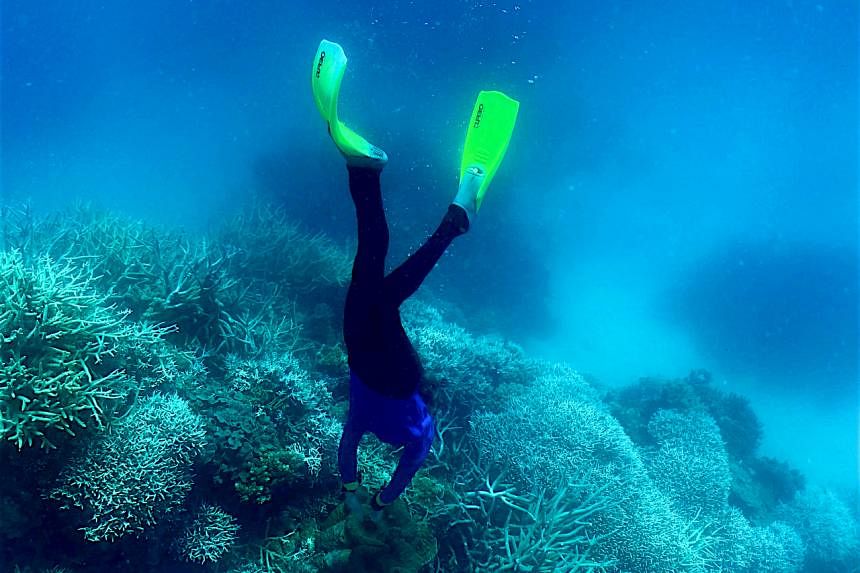SINGAPORE - Parts of Australia's Great Barrier Reef have recovered strongly in the past year, with the highest levels of coral cover seen in nearly four decades, a government report said on Thursday (Aug 4).
A marine heatwave that hit the reef earlier this year caused bleaching of the corals but not the mass mortality as originally feared, the report by the Australian Institute of Marine Science (AIMS) said.
But while some coral species are thriving, the findings mask the loss of biodiversity on the reef as it faces greater challenges from warmer waters, cyclones and coral-eating starfish.
AIMS' annual summary report on coral reef condition for 2021/2022 showed increased coral cover across much of the reef. The gains build on increases recorded last year after severe damage from recent marine heatwaves, especially the devastating bleaching events of 2016 and 2017.
This year's bleaching, when the corals turn white from heat stress, was the fourth such major event in the past seven years.
AIMS said the northern and central reef recorded the highest amount of coral cover since it began monitoring 36 years ago. However, average coral cover in the southern region decreased slightly compared with last year.
In the northern region, average hard coral cover grew to 36 per cent this year from a low of 13 per cent in 2017, while in the central region, hard coral cover increased to 33 per cent from a low of 12 per cent in 2019.
The survey focused on hard coral species since they build the reef.
AIMS calculated the results based on 87 representative reefs surveyed between August last year and May this year.
Most of the increase was driven by fast-growing Acropora corals, which are vulnerable to wave damage, coral bleaching and crown-of-thorns starfish outbreaks.
AIMS chief executive officer Paul Hardisty said the results in the north and central regions were a sign the reef could still recover, but the loss of coral cover in the southern region also showed how fragile it was.
"A third of the gain in coral cover we recorded in the south in 2020/2021 was lost last year due to ongoing crown-of-thorns starfish outbreaks," he said in a statement.
Climate change is the largest threat to the reef, which lost half of its coral populations between 1995 and 2017 because of ocean warming, a study published in 2020 found.
Bleaching occurs when sea surface temperatures surpass tolerance levels for the corals. If the high water temperatures last weeks, the corals can die.
Dr Hardisty said the bleaching events in 2020 and this year, while extensive, did not reach the intensity of the 2016 and 2017 events.
But behind the coral cover increase lies a wider problem of loss of species richness across the reef, which has about 600 different types of coral, according to the Great Barrier Reef Marine Park Authority.
"We are already finding evidence that each mass bleaching event leads to local extinctions of rarer species," said Dr Zoe Richards, senior research fellow from the Coral Conservation and Research Group at Curtin University in Perth.
"So the short-term success of a handful of fast-growing coral species masks the full story about the largely hidden losses of biodiversity on the reef," she said in comments to the Australian Science Media Centre.
AIMS monitoring programme team leader Mike Emslie told The Straits Times: "Coral cover provides us with a robust measure of reef status, but it does not tell us anything about the diversity or composition of coral reefs.
"While this important indicator of reef condition is great news, coral cover is a simple indicator of reef status that needs to be considered with more nuanced information."


